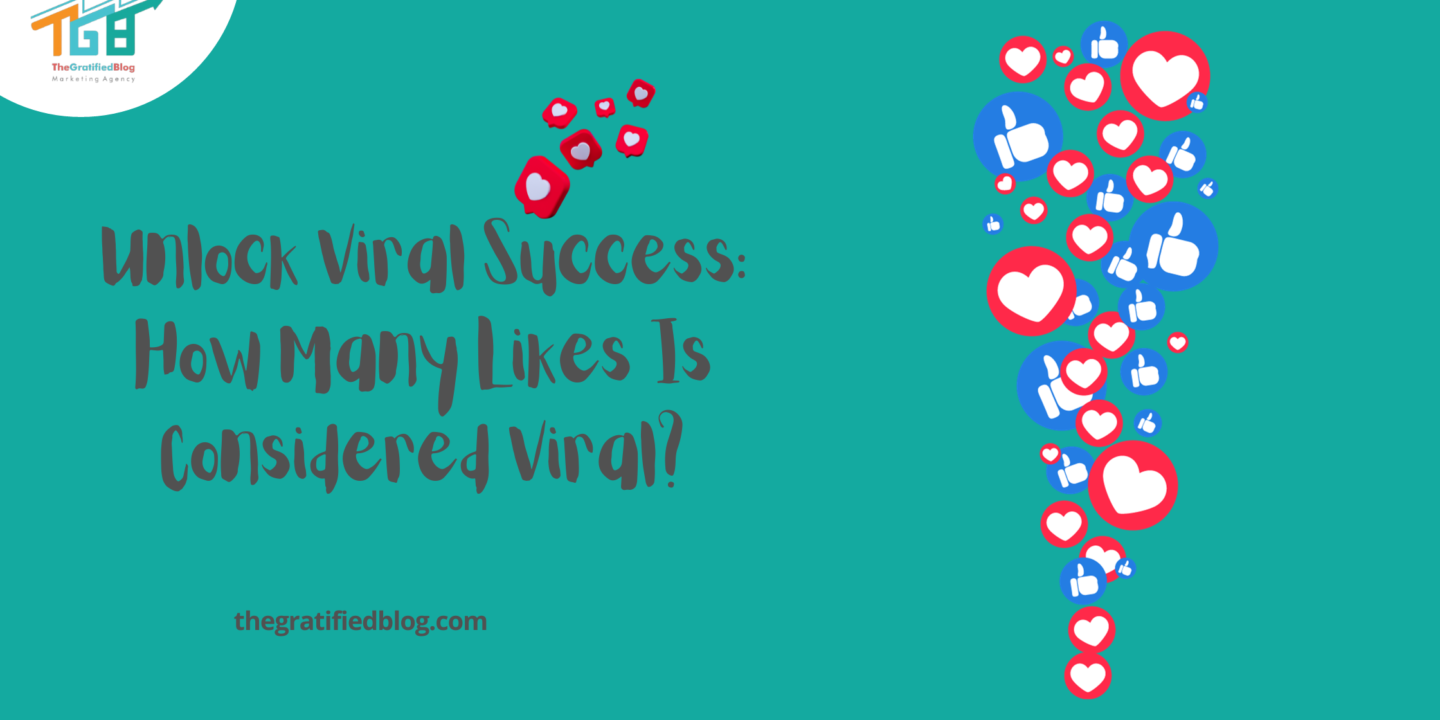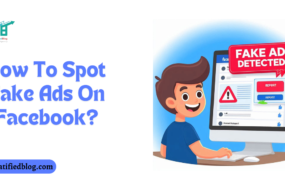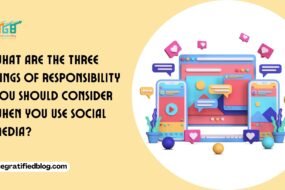
In the ever-evolving landscape of social media, the quest for virality has become an enigma, with countless content creators and businesses alike pondering the elusive question: “How many likes are considered viral?” Pursuing virality isn’t merely about the number of likes; it’s about achieving recognition and reach that transcends the boundaries of one’s immediate social circle.
In this blog, we embark on a journey to demystify the concept of virality, exploring the factors that influence it and seeking to understand the elusive threshold of likes that defines content as genuinely viral.
So, if you’ve ever wondered what it takes to achieve viral status on social media, read on as we unravel the mystery of “How many likes is considered viral?”
So, let’s get started by understanding virality:
Understanding Virality And The Factors That Impact Virality
Before determining how many likes qualify as viral, we must comprehend what virality means in social media.
Virality refers to the rapid and widespread sharing, engagement, and visibility of a piece of content across various social platforms, be it a video, photo, tweet, or any other form of media. A viral post transcends the immediate network of the creator, resonating with a broader audience and generating a significant level of attention.
Now, let’s understand the factors that influence virality.
Several factors play a role in influencing its popularity. Here are some of the critical elements that contribute to virality:
- Content Quality: The caliber of your content is paramount in the quest for virality. High-quality content captures the viewer’s attention and compels them to engage with it. Whether it’s a stunning image, an informative article, or a captivating video, content that stands out due to its excellence is more likely to go viral.
- Timing: The timing of your content can significantly impact its virality. Posting content related to trending topics, current events, or seasonal themes can make it more shareable. When your content aligns with what’s on people’s minds at a particular moment, it has a higher chance of gaining attention and being shared across social media platforms.
- Audience Engagement: Engaging your audience is a crucial driver of virality. When people like, comment, share, or retweet your content, it becomes more visible to their connections, creating a ripple effect. High audience engagement signals that your content resonates with viewers and is worth sharing, increasing its chances of reaching a wider audience.
- Shareability: The ease with which others can share your content is critical to virality. Content with shareable qualities, such as relatable humor, emotional resonance, or a clear call to action, spreads quickly. When people find it effortless to share your content with their networks, it facilitates the viral spread of your message.
- Algorithmic Support: Social media platforms employ complex algorithms that decide which content gets displayed to users. Understanding these algorithms and optimizing your content to align with them is crucial for achieving virality. Algorithms promote content based on various factors, including user interactions, relevance, and trending topics. By crafting content that appeals to these algorithms, you increase the likelihood of showcasing your content to a broader audience.
Now that we have grasped the fundamental concepts of what makes content go viral, let’s delve deeper into the central question of this blog: How many likes are considered viral?
The “Viral” Threshold: How Many Likes Is Considered Viral?
The number of likes required for a post to be considered viral is a subjective matter that varies across platforms, content types, and audiences. While there is no universal benchmark, we can offer some general guidelines for different platforms:
On Facebook, the virality threshold is influenced by the size of your friend list and the level of engagement within your network. In a personal context, a post with hundreds of likes and shares can achieve viral status among your friends and acquaintances. This means that content resonates deeply within your immediate network, leading to widespread engagement and visibility.
However, the bar is set much higher for businesses, brands, or public figures with larger audiences. Viral content on such pages often requires thousands of likes and shares to break through the noise and capture the attention of a broader audience. The key here is to create content that fosters active engagement, making it shareable and exciting enough to cross over to a wider demographic.
Instagram’s definition of virality comes with its own unique set of parameters. For the everyday Instagram user, a post that garners a few thousand likes is often regarded as having achieved viral status. This implies that the content has managed to break free from the confines of one’s follower count, resonating with a substantial and diverse audience. It’s a testament to the content’s ability to capture attention and generate widespread engagement.
However, the landscape changes regarding influencers, celebrities, or well-established brands with large followings. The quest for genuine virality entails reaching far higher numbers for these entities. Many thousands, or even hundreds of thousands of likes, are often required to achieve the sought-after viral impact. The reason behind this elevated threshold lies in the sheer intensity of competition on Instagram. Amidst many individuals and businesses competing for recognition, it takes a substantial wave of engagement to stand out and make a noticeable mark within this highly saturated platform.
Twitter’s real-time nature adds a layer of complexity to defining the exact threshold for virality. The platform’s rapid pace means content can go viral, sometimes within minutes. For the average Twitter user, a tweet accumulating a few hundred retweets and likes is typically a success. This level of engagement indicates that the tweet has captured the attention of its audience and sparked conversations.
However, quantifying virality on Twitter remains a fluid and ever-changing process. Tweets that garner thousands of retweets are often regarded as viral, particularly when they touch upon trending topics or resonate with a wide-ranging audience. Twitter’s distinctive combination of conciseness and immediacy results in a virality threshold that relies heavily on the inherent viral potential of the content itself. It’s a testament to the platform’s dynamic nature, where virality can strike suddenly and spread like wildfire in response to compelling, timely, or relatable content.
YouTube
As a platform primarily focused on video content with longer formats, YouTube sets a relatively high bar for content to achieve virality. To be deemed viral on YouTube, a video usually requires hundreds of thousands, if not millions, of views and likes. It’s a testament to the platform’s emphasis on substance and quality, where viral content must resonate with a broad audience and leave a lasting impact.
What distinguishes YouTube from other platforms is its potential to garner views and likes and significantly impact a channel’s subscriber count. A viral video can rapidly grow a creator’s online following, fostering a dedicated fanbase. The competitive nature of YouTube, compounded by the vast array of content available, means that achieving viral status necessitates more than chance. It requires exceptional content quality, compelling storytelling, and meaningful audience engagement, making virality on YouTube a hallmark of dedication and creativity.
Remember that these are rough estimates, and virality varies greatly depending on your niche, content, and audience. What may be viral in one context might not be in another. Now, let’s understand the benefits of going viral.
The Power Of Going Viral
Achieving virality can significantly influence an individual, business, or brand. Here are some of the benefits of attaining virality:
- Increased Visibility: When content goes viral, it gains widespread attention and reaches a diverse audience far beyond the creator’s immediate network. This surge in visibility is a critical factor in the allure of virality, as it brings content to the forefront of public consciousness.
- Audience Growth: Viral content often results in a rapid increase in followers, subscribers, or fans. This influx of new followers allows the creator to expand their online presence and influence, creating a larger and more engaged audience.
- Monetization Opportunities: A more significant audience opens the door to various monetization avenues. Creators can capitalize on their newfound popularity through sponsorships, advertising deals, merchandise sales, and more. Viral content can be a catalyst for turning a passion into a profitable venture.
- Brand Recognition: Going viral can establish a brand or creator as a household name. This enhanced recognition and visibility attract new followers and bolster the creator’s reputation, positioning them as a leading authority in their niche.
- Social Proof: Viral content serves as a powerful form of social proof. When content goes viral, it becomes a symbol of popularity and trustworthiness, making it easier for the creator to gain trust and credibility in the vast and often skeptical online sphere. Virality acts as a stamp of approval, reinforcing the creator’s influence and authority.
With an understanding of the impact of viral content, you might now be wondering how to create such content. Well, no worries. In the upcoming section, we will present you with valuable tips and strategies for crafting content with the potential to achieve virality.
Tips For Creating Viral Content
While there’s no guaranteed formula for creating viral content, several strategies can increase your chances:
Understand Your Audience
Crafting viral content begins with deeply understanding your audience. By tailoring your content to match your target audience’s likes and interests, you increase the likelihood that your content resonates with them. This alignment ensures that your content will more likely capture their attention and prompt them to engage and share it.
Embrace Trends
Remaining up-to-date with the most recent trends and subjects is a potent strategy for achieving virality. Creating content that aligns with these trends makes your content more relevant and shareable. When your content taps into what’s currently capturing people’s interest, it has a better chance of going viral, as it speaks to the present moment.
Evoke Emotions
Content that triggers strong emotions through humor, inspiration, or empathy is more likely to be shared and go viral. Emotionally charged content tends to resonate deeply with viewers, prompting them to engage with it and share it with others, amplifying its reach.
Consistency
Virality often results from consistency. Regularly creating and sharing high-quality content is crucial for building an engaged audience that is more likely to contribute to the virality of your content. When followers know they can rely on your content for value or entertainment, they are likelier to share it with their networks.
Engage With Your Audience
Building a community around your content is vital for going viral. Proactively interacting with your audience, addressing the comments, and fostering discussions can increase sharing and engagement. When your audience feels a personal connection to your content and you, they are more inclined to help your content go viral by sharing it with their networks.
Conclusion
The question of how many likes are considered viral remains elusive and subjective, varying across platforms, niches, and content types. Ultimately, going viral is not just about numbers; it’s about making a significant impact and resonating with a broad audience. While achieving virality can be a challenging feat, it’s not impossible. With the right strategies and a dash of creativity, anyone can increase their chances of becoming a viral sensation on social media.
If you still have any questions related to the blog, then feel free to leave them in the comment section. We will be happy to answer you.
Thanks for reading 🙂








No Comments